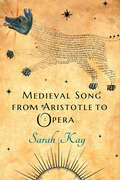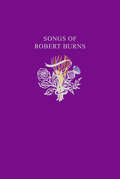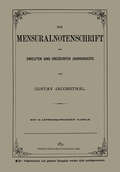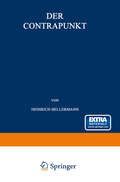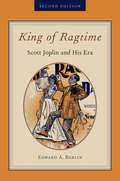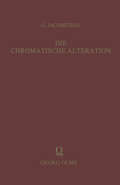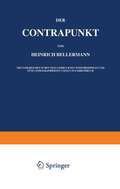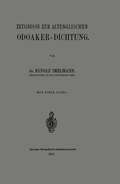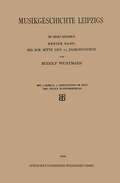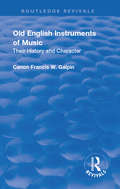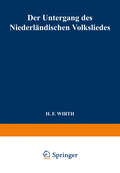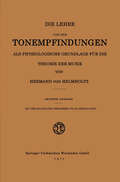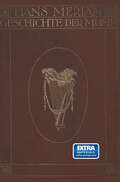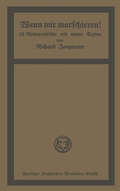- Table View
- List View
Since You've Been Gone (PDF)
by Rainbow SazThis is a musical score in Modified Stave Notation. The original file is available as .mscz format and the braille music version as .brf from mas@rnib.org.uk
Since You've Been Gone (PDF)
by Rainbow SazThis is a musical score in Modified Stave Notation. The original file is available as .mscz format and the braille music version as .brf from mas@rnib.org.uk
Symphony No 104: second movement (three part arrangement) (PDF)
by Saz HaydnThis is a musical score in Modified Stave Notation. The original file is available as .mscz format and the braille music version as .brf from mas@rnib.org.uk
Symphony No 104: First movement, three part arrangement (PDF)
by Saz HaydnThis is a musical score in Modified Stave Notation. The original file is available as .mscz format and the braille music version as .brf from mas@rnib.org.uk
Symphony No. 104: Third movement (three part arrangement) (PDF)
by Saz HaydnThis is a musical score in Modified Stave Notation. The original file is available as .mscz format and the braille music version as .brf from mas@rnib.org.uk
Symphony No. 104: fourth movement (three part arrangement) (PDF)
by Saz HaydnThis is a musical score in Modified Stave Notation. The original file is available as .mscz format and the braille music version as .brf from mas@rnib.org.uk
Symphony No. 4 (Italian): First movement (three part arrangement) (PDF)
by Mendelssohn SazThis is a musical score in Modified Stave Notation. The original file is available as .mscz format and the braille music version as .brf from mas@rnib.org.uk
Symphony No. 4 (Italian): second movement (three part arrangement) (PDF)
by Mendelssohn SazThis is a musical score in Modified Stave Notation. The original file is available as .mscz format and the braille music version as .brf from mas@rnib.org.uk
Symphony No.4 (Italian): third movement (three part arrangement) (PDF)
by Mendelssohn SazThis is a musical score in Modified Stave Notation. The original file is available as .mscz format and the braille music version as .brf from mas@rnib.org.uk
Symphony No. 4 (Italian): Fourth movement (three part arrangement) (PDF)
by Mendelssohn SazThis is a musical score in Modified Stave Notation. The original file is available as .mscz format and the braille music version as .brf from mas@rnib.org.uk
Medieval Song from Aristotle to Opera
by Sarah KayFocusing on songs by the troubadours and trouvères from the twelfth to the fourteenth centuries, Medieval Song from Aristotle to Opera contends that song is not best analyzed as "words plus music" but rather as a distinctive way of sounding words. Rather than situating them in their immediate period, Sarah Kay fruitfully listens for and traces crosscurrents between medieval French and Occitan songs and both earlier poetry and much later opera. Reflecting on a song's songlike quality—as, for example, the sound of light in the dawn sky, as breathed by beasts, as sirenlike in its perils—Kay reimagines the diversity of songs from this period, which include inset lyrics in medieval French narratives and the works of Guillaume de Machaut, as works that are as much desired and imagined as they are actually sung and heard. Kay understands song in terms of breath, the constellations, the animal soul, and life itself. Her method also draws inspiration from opera, especially those that inventively recreate medieval song, arguing for a perspective on the manuscripts that transmit medieval song as instances of multimedia, quasi-operatic performances. Medieval Song from Aristotle to Opera features a companion website (cornellpress.manifoldapp.org/projects/medieval-song) hosting twenty-four audio or video recordings, realized by professional musicians specializing in early music, of pieces discussed in the book, together with performance scores, performance reflections, and translations of all recorded texts. These audiovisual materials represent an extension in practice of the research aims of the book—to better understand the sung dimension of medieval song.
Robert Burns Songs: Selections From The Poems, Songs, And Ballads Of Robert Burns (Collins Scottish Archive)
by Robert BurnsA small format gift book which is a reproduction of the popular book ‘Songs Robert Burns’ originally published by Collins in 1947. Selected by G.F. Maine and written by burns between 1759 and 1796.
King of Ragtime: Scott Joplin and His Era
by Edward A. BerlinWhen it was first published in 1994, King of Ragtime: Scott Joplin and his Era was widely heralded not only as the most thorough investigation of Scott Joplin's life and music, but also as a gripping read, almost a detective story. This new and expanded edition-more than a third larger than the first-goes far beyond the original publication in uncovering new details of the composer's life and insights into his music. It explores Joplin's early, pre-ragtime career as a quartet singer, a period of his life that was previously unknown. The book also surveys the nature of ragtime before Joplin entered the ragtime scene and how he changed the style. Author Edward A. Berlin offers insightful commentary on each of all of Joplin's works, showing his influence on other ragtime and non-ragtime composers. He traces too Joplin's continued music studies late in life, and how these reflect his dedication to education and probably account for the radical changes that occur in his last few rags. And he puts new emphasis on Joplin's efforts in musical theater, bringing in early versions of his Ragtime Dance and its precedents. Joplin's wife Freddie is shown to be a major inspiration to his opera Treemonisha, with her family background and values being reflected in that work. Joplin's reputation faded in the 1920s-30s, but interest in his music slowly re-emerged in the 1940s and gradually built toward a spectacular revival in the 1970s, when major battles ensued for possession of rights.
Revival: Their History and Character (Routledge Revivals)
by Francis W. GalphinThe study of musical instruments now no longer with us is necessary, not only for the musician and composer, but for the man of letters, the artist, and the chronicler of our national life; for many allusions to customs of bygone times cannot otherwise be understood, and we should be spared such a trying ordeal as we were recently subjected to by one of our leading illustrated papers, which introduced into a thirteenth century scene a twentieth century mandoline with an up to date mechanism.
Revival: Their History and Character (Routledge Revivals)
by Francis W. GalphinThe study of musical instruments now no longer with us is necessary, not only for the musician and composer, but for the man of letters, the artist, and the chronicler of our national life; for many allusions to customs of bygone times cannot otherwise be understood, and we should be spared such a trying ordeal as we were recently subjected to by one of our leading illustrated papers, which introduced into a thirteenth century scene a twentieth century mandoline with an up to date mechanism.
Der Untergang des Niederländischen Volksliedes
by H. F. WirthDieser Buchtitel ist Teil des Digitalisierungsprojekts Springer Book Archives mit Publikationen, die seit den Anfängen des Verlags von 1842 erschienen sind. Der Verlag stellt mit diesem Archiv Quellen für die historische wie auch die disziplingeschichtliche Forschung zur Verfügung, die jeweils im historischen Kontext betrachtet werden müssen. Dieser Titel erschien in der Zeit vor 1945 und wird daher in seiner zeittypischen politisch-ideologischen Ausrichtung vom Verlag nicht beworben.
Die Lehre von den Tonempfindungen als Physiologische Grundlage für die Theorie der Musik
by Hermann von HelmholtzDieser Buchtitel ist Teil des Digitalisierungsprojekts Springer Book Archives mit Publikationen, die seit den Anfängen des Verlags von 1842 erschienen sind. Der Verlag stellt mit diesem Archiv Quellen für die historische wie auch die disziplingeschichtliche Forschung zur Verfügung, die jeweils im historischen Kontext betrachtet werden müssen. Dieser Titel erschien in der Zeit vor 1945 und wird daher in seiner zeittypischen politisch-ideologischen Ausrichtung vom Verlag nicht beworben.
Illustrierte Geschichte der Musik von der Renaissance bis auf die Gegenwart
by Hans Merian Bernhard EggDieser Buchtitel ist Teil des Digitalisierungsprojekts Springer Book Archives mit Publikationen, die seit den Anfängen des Verlags von 1842 erschienen sind. Der Verlag stellt mit diesem Archiv Quellen für die historische wie auch die disziplingeschichtliche Forschung zur Verfügung, die jeweils im historischen Kontext betrachtet werden müssen. Dieser Titel erschien in der Zeit vor 1945 und wird daher in seiner zeittypischen politisch-ideologischen Ausrichtung vom Verlag nicht beworben.
Wenn wir marschieren!: 16 Armeemärsche mit neuen Texten
by Richard ZoozmannDieser Buchtitel ist Teil des Digitalisierungsprojekts Springer Book Archives mit Publikationen, die seit den Anfängen des Verlags von 1842 erschienen sind. Der Verlag stellt mit diesem Archiv Quellen für die historische wie auch die disziplingeschichtliche Forschung zur Verfügung, die jeweils im historischen Kontext betrachtet werden müssen. Dieser Titel erschien in der Zeit vor 1945 und wird daher in seiner zeittypischen politisch-ideologischen Ausrichtung vom Verlag nicht beworben.

